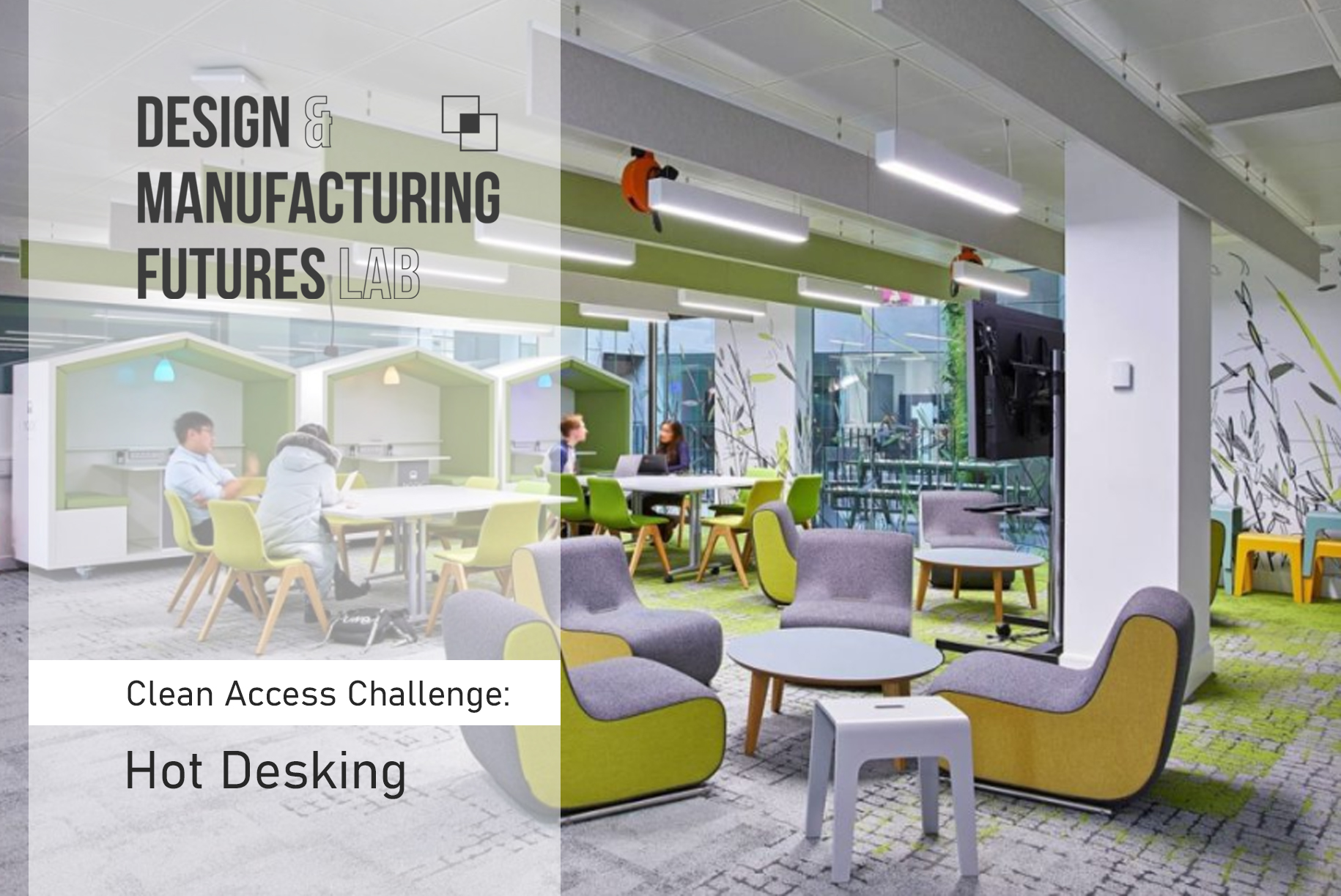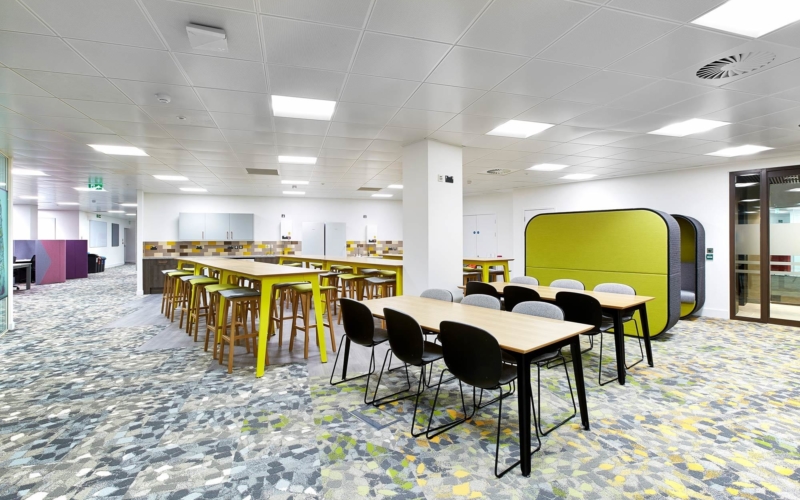Problem
Several industries have, in recent years, been moving towards an agile work environment. This has been done for several reasons; to improve productivity, reduce company footprint and save costs. This has frequently meant that their staff have been expected to “hot desk” – where staff are not given a desk but are instead expected to find a workspace within a designated space. Often, this requires the use of a general use desks – with a monitor, phone, keyboard/mouse, chair etc – that staff can use a personal laptop with.
Design Brief
As COVID-19 requires social distancing of at least 2m and is believed to survive on surfaces for up to 72 hours, some level of adjustment will need to be made to enable hot desking to be safe. The question to you is how will this be achievable? The solution should require minimal changes to human behaviour, require few additional products to enable and answer one or more of the following:
- How can a company encourage their staff to follow social distancing rules?
- How can you stop staff from touching potentially “infected” surfaces?
- How can you stop staff from unnecessary contact (i.e. create social bubbles within the workplace)?
- Anything else you may think important.
Anything you propose should be well evidenced with information and statistics on hot desking as well as considering how your plans will affect staff.
Considerations
Any proposed new products proposed will need to be manufactured rapidly and on scale. Could any of these items be substituted for household objects? If not, it should be possible to make them locally.
Any items, other than cleaning agents, that come into contact with infected surfaces will need to be protected (using a cover) or disinfected. Note: 3D printed parts can’t be easily disinfected at home!
General Guidelines
Remember, all solutions should follow the guidelines below.
Solutions need to embody the values of project clean access and they should ideally follow the following design guidelines:
- Seal away the transmission site – all devices should in some way enclose or seal away the parts that make contact with potential transmission sites.
- Be simple, robust, cheap to make and use.
- Either:
- make use of common household or workplace items as part of the device, to save on cost and increase accessibility to all. For example, pens and USB sticks with lids to operate access devices and seal away transmission sites.
- OR be manufacturable by locally available technologies
Submission Guidelines
To be efficient with your time and to reduce the burden of paperwork our submission guidelines are as light-weight as possible, including a short overview/description, details of use, and the all important CAD/CAM models. We encourage the use of photographs and images and just enough information to present the design, its installation and operation. Given this, contributions should be a simple email adhering to the following minimum submission guidelines:
- Provide enough information to describe the design (purpose, typical applications, etc), ideally in the form or a short written summary.
- Contain instruction / guidance for use, ideally in the form of photos or videos.
- If to be digitally manufactured, CAM tractable files be provided for reproduction (eg STLs for 3D printing) and CAD tractable files (STEP or IGES) so designs can be customised or further developed if necessary.
All published designs will be made open access and shared with the global community to aid transition to normality post lockdown. By participating in the Clean Access Challenge you consent to the terms of creative commons license CC BY 4.0.
Get Involved
If you would like to get involved, get more information, or submit your own ideas for our design repository, send us an email at project-clean-access@bristol.ac.uk




